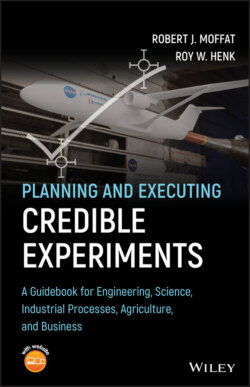Читать книгу Planning and Executing Credible Experiments - Robert J. Moffat - Страница 47
Another Invitation from Feynman
ОглавлениеRichard Feynman was an experimentalist as well as a theoretician. CalTech once assigned him to teach introductory physics. His notes are immortalized in The Feynman Lectures on Physics, Volumes 1–3 (1963). He remarked about fluid physics in volume 1, chapter 3 of his lectures:
There is a physical problem that is common to many fields, that is very old, and that has not been solved. It is not the problem of finding new fundamental particles, but something left over from a long time ago – over a hundred years. Nobody in physics has really been able to analyze it mathematically satisfactorily in spite of its importance to the sister sciences. It is the analysis of circulating or turbulent fluids.
In volume 2, Feynman went into more depth in chapter 41 entitled “The Flow of Wet Water.”
In a personal letter, Feynman admitted “The theory of turbulence (I have spent several years on it without success).” Turbulence was an area of classical physics beyond even Feynman's ability to solve. To this day, basic turbulence remains unsolved. As an added incentive, one of the seven Millennial Problems awaits solution of the Navier–Stokes equations which govern fluid flows.
Consider Feynman's challenge as an invitation to thermo‐fluids, experimental or theoretical. It is the most challenging area of classical physics. Turbulence becomes further complicated by heat transfer; yet more complicated by mass transfer; yet more by chemical reactions or combustion; yet more complicated by electromagnetic interactions. It is important for flight, for weather, for breath and blood, for life, for engines, for circulation within celestial stars. Flows of liquids, gases, and plasmas are found at the microscopic scale within living cells to the astronomic scales between galaxies.
One of our colleagues, Professor Adrian Bejan, overlaps with us in the same field and the same publisher. Bejan's Constructal Theory has brought a fresh theoretical approach to thermo‐fluid systems, to urban planning, and to appreciating design in living creatures as well as other fields.
